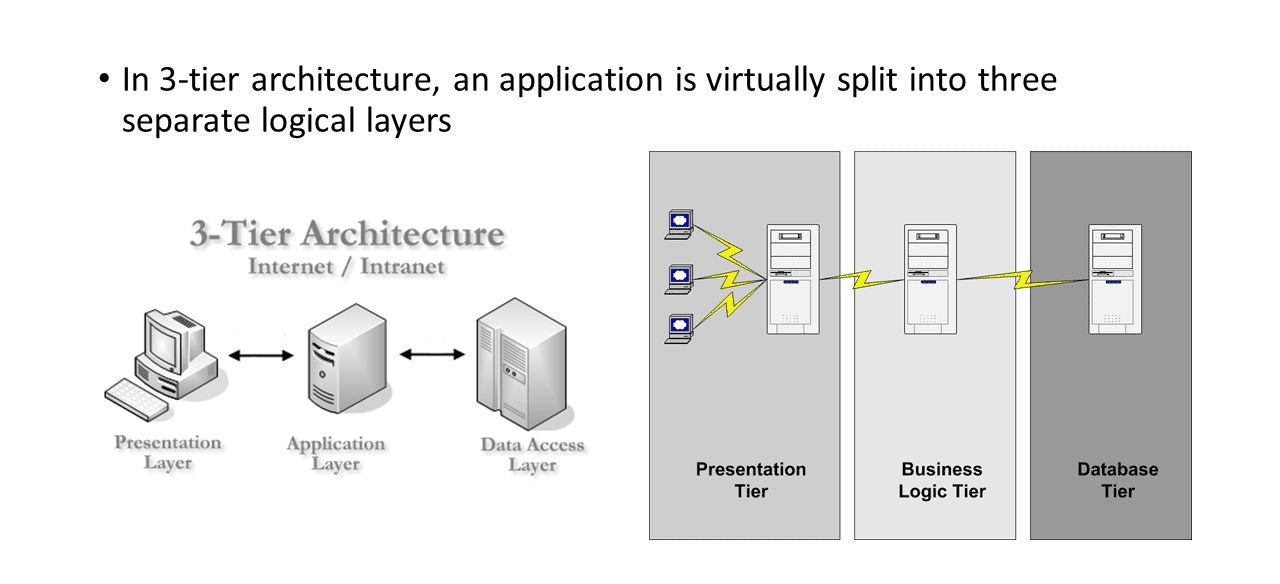What is client-server architecture and what are its types?
- May 14, 2018
- 0
Rising influence of Client-Server Model for the improvement of online industry has generated inherent requirement of the client-server based applications. For the communication of the users with online business organizations disseminated over the internet, client-server based applications are playing a significant role. This is where the importance of client-server architecture receives its importance.
Client Server Architecture
Client-Server Architecture is a shared architecture system where loads of client-server are divided. The client-server architecture is a centralized resource system where server holds all the resources. The server receives numerous performances at its edge for sharing resources to its clients when requested. Client and server may be on the same or in a network. The server is profoundly stable and scalable to return answers to clients. This Architecture is Service Oriented which means client service will not be interrupted. Client-Server Architecture subdues network traffic by responding to the inquiries of the clients rather than a complete file transfer. It restores the file server with the database server.
Client computers implement a bond to allow a computer user to request services of the server and to represent the results the server returns. Servers wait for requests to appear from clients and then return them. A server usually gives a standardized simple interface to clients to avoid a hardware/software confusion. Clients are located at workplaces or on personal machines, at the same time servers will be located somewhere powerful in the network. This architecture is useful mostly when clients and the server each have separate tasks that they routinely perform. Many clients can obtain the server’s information concurrently, and also a client computer can execute other tasks, for instance, sending e-mails.
Types of Client Server Architecture
1-tier architecture
In this category of client-server setting, the user interface, marketing logic and data logic are present in the same system. This kind of service is reasonable but it is hard to manage due to data variance that allots replication of work. One-tier architecture consists of layers.
For example, Presentation, Business, Data Access layers within a single software package. The data is usually stored in the local system or a shared drive. Applications which handle all the three tiers such as MP3 player, MS Office come under one-tier application.
2-tier architecture
In this type of client-server environment, the user interface is stored at client machine and the database is stored on the server. Database logic and business logic are filed at either client or server but it needs to be maintained. If Business Logic and Data Logic are collected at a client side, it is named as fat client thin server architecture. If Business Logic and Data Logic are handled on the server, it is called thin client fat server architecture. This is considered as affordable.
In two-tier architecture, client and server have to come in direct incorporation. If a client is giving an input to the server there shouldn’t be any intermediate. This is done for rapid results and to avoid confusion between different clients. For instance, online ticket reservations software use this two-tier architecture.
3-tier architecture
In this variety of client-server context, an extra middleware is used that means client request goes to the server through that middle layer and the response of server is received by middleware first and then to the client. This architecture protects 2-tier architecture and gives the best performance. This system comes expensive but it is simple to use. The middleware stores all the business logic and data passage logic. The idea of middleware is to database staging, queuing, application execution, scheduling etc. A Middleware improves flexibility and gives the best performance.
The Three-tier architecture is split into 3 parts, namely, The presentation layer (Client Tier), Application layer (Business Tier) and Database layer (Data Tier). The Client system manages Presentation layer; the Application server takes care of the Application layer, and the Server system supervises Database layer.
In the present scenario of online business, there has been growing demands for the quick responses and quality services. Therefore, the complex client architecture is crucial for the business activities. Companies usually explore possibilities to keep service and quality meet to maintain its marketplace with the help of client-server architecture. The architecture increases productivity through the practice of cost-efficient user interfaces, improved data storage, expanded connectivity and secure services.





